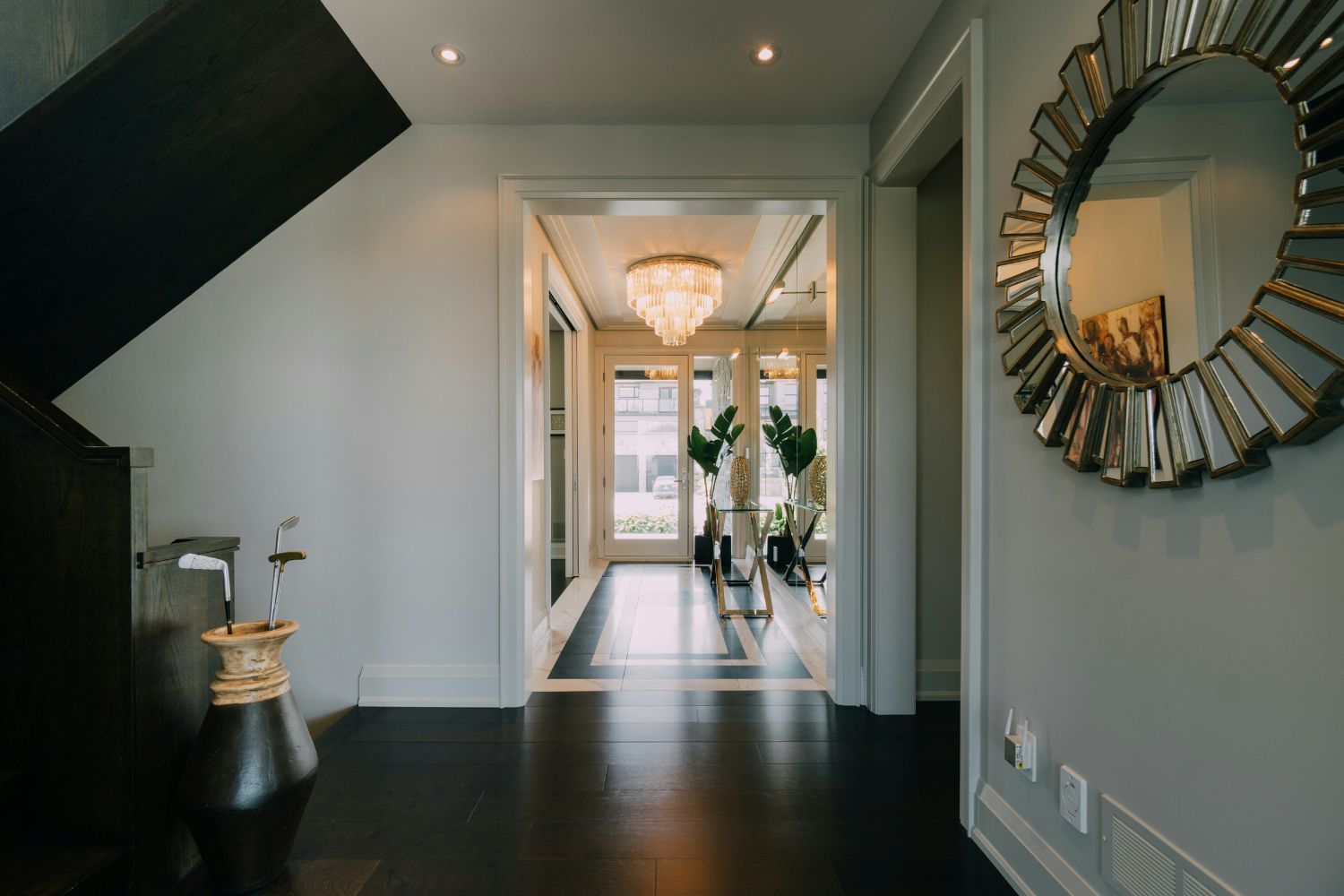- Home
- Articles
- Architectural Portfolio
- Architectral Presentation
- Inspirational Stories
- Architecture News
- Visualization
- BIM Industry
- Facade Design
- Parametric Design
- Career
- Landscape Architecture
- Construction
- Artificial Intelligence
- Sketching
- Design Softwares
- Diagrams
- Writing
- Architectural Tips
- Sustainability
- Courses
- Concept
- Technology
- History & Heritage
- Future of Architecture
- Guides & How-To
- Projects
- Interior Design
- Competitions
- Jobs
- Store
- Tools
- More
- Home
- Articles
- Architectural Portfolio
- Architectral Presentation
- Inspirational Stories
- Architecture News
- Visualization
- BIM Industry
- Facade Design
- Parametric Design
- Career
- Landscape Architecture
- Construction
- Artificial Intelligence
- Sketching
- Design Softwares
- Diagrams
- Writing
- Architectural Tips
- Sustainability
- Courses
- Concept
- Technology
- History & Heritage
- Future of Architecture
- Guides & How-To
- Projects
- Interior Design
- Competitions
- Jobs
- Store
- Tools
- More
Exploring Shadow and Illumination in Design: Tips for Impactful Visual Experiences
Discover the transformative power of shadow and illumination in design. This article explores how light and shadow influence perception, evoke emotions, and create depth across architecture, graphic design, and interiors. Learn about the types of lighting and techniques for integrating these elements effectively, along with inspiring case studies.

In the world of design, shadows and illumination play a crucial role in shaping our experiences. They guide our eyes, create depth, and evoke emotions, transforming a simple space into an immersive environment. By understanding how these elements interact, we can elevate our designs and communicate more effectively.
When we harness the power of light and shadow, we unlock new dimensions in our work. Whether it’s in architecture, graphic design, or interior spaces, the interplay between these two forces can make or break a project. Join us as we explore the fascinating relationship between shadow and illumination, and discover how to use them to enhance your designs.

Table of Contents
ToggleOverview of Shadow and Illumination in Design
Shadows and illumination significantly influence design. We can create a sense of depth through shadows, making visuals appear more three-dimensional. Shadows also guide the viewer’s attention, emphasizing specific elements within a composition.

Illumination affects mood and perception. Different lighting conditions evoke various emotions, from warmth to coldness. For example, warm light fosters a welcoming atmosphere, while harsh light can create tension or highlight anxiety.
In architecture, we use shadows to enhance structural details. Properly planned lighting interacts with surfaces, creating dynamic aesthetics. Natural light through windows can transform a space, enhancing colors and textures.
In graphic design, we often rely on contrast created by light and shadow. Using these elements effectively brings clarity and hierarchy to layouts. Techniques such as drop shadows or gradients add depth to two-dimensional designs, making them more engaging.
Understanding the interplay between shadow and illumination can elevate our designs and enhance the viewer’s experience. By mastering these elements, we can create environments that are both functional and aesthetically pleasing.
Importance of Shadow in Design
Shadows play a crucial role in design, significantly enhancing visual interest and emotional response. By understanding shadows, we can create more dynamic and purposeful environments.

Visual Depth and Dimension
Shadows add depth and dimension to design elements. They enhance the perception of three-dimensionality by creating contrast against light sources. As we position shadows intentionally, they guide the viewer’s eye and highlight features. Shadows also help delineate different zones within a layout, making spaces more navigable. For example, in interior design, utilizing shadows behind furniture or fixtures can establish a sense of hierarchy, emphasizing key areas while creating balance throughout a room.
Emotional Impact
Shadows can evoke specific emotional responses in viewers. Depending on their size, intensity, and angle, shadows can create feelings of comfort, drama, or tension. For instance, long, soft shadows during golden hour in architecture engender warmth and tranquility. Conversely, sharp, harsh shadows can evoke unease or urgency. By manipulating shadows, we can influence the overall atmosphere, making our designs resonate on a deeper emotional level, enhancing the user’s experience.
The Role of Illumination in Design
Illumination plays a crucial role in design by influencing aesthetics, functionality, and emotions. Mastering different types of illumination can significantly enhance the overall impact of a design.

Types of Illumination
We categorize illumination into three primary types: ambient, task, and accent lighting.
- Ambient lighting provides overall illumination. It sets the general mood and ensures visibility throughout a space. Common sources include ceiling fixtures and wall sconces.
- Task lighting focuses on specific activities. It enhances visibility in work areas, such as desks or kitchens. Examples include desk lamps and under-cabinet lights.
- Accent lighting highlights certain elements or areas. It creates visual interest and drama, often used in art displays or architectural features. Examples include spotlighting and wall washers.
Understanding these types allows us to layer light effectively, creating a balanced atmosphere.
Enhancing Aesthetics and Functionality
We enhance both aesthetics and functionality through thoughtful illumination strategies. Properly placed lighting highlights design elements, shapes, and textures, making a space visually appealing.
- Highlighting features: Focal points, such as artwork or architectural details, become more pronounced with strategic accent lighting.
- Creating ambiance: Soft, warm light can evoke feelings of comfort. Conversely, bright, cool light fosters energy and focus.
- Facilitating tasks: Sufficient task lighting ensures safety and efficiency in areas where precision is vital, such as kitchens and workspaces.
By integrating illumination thoughtfully, we can significantly elevate both the visual appeal and practical use of any designed space.
Techniques for Integrating Shadow and Illumination
Integrating shadow and illumination effectively enhances the overall impact in design. We can explore various techniques under key considerations such as lighting sources and material choices.

Natural vs. Artificial Lighting
Natural lighting enhances spaces by creating dynamic shadows and soft illumination. It shifts throughout the day, contributing to a mood that complements interior designs. We can increase the impact of natural light through the use of large windows, skylights, and open layouts.
Artificial lighting, in contrast, offers consistency and control. We can manipulate its intensity and color temperature to evoke specific emotions. Techniques like layering different light types—ambient, task, and accent—allow us to manage shadows effectively and focus attention on design elements. Using dimmers adds flexibility, enabling us to adjust the lighting based on activity or mood.
Color and Material Considerations
Color selection plays a vital role in how shadows and illumination interact. We should choose paint and furnishings in lighter shades to reflect light and brighten spaces while darker colors absorb light, creating more pronounced shadows.
Material choices also impact illumination. Reflective surfaces, like glass and polished surfaces, enhance light distribution, while matte finishes tend to soften light and create subtle shadows. Integrating materials that complement both shadows and illumination results in a harmonious balance that enhances the viewer’s experience. By considering both color and material, we can craft cohesive designs that balance depth and brightness effectively.
Case Studies of Effective Design
Examining specific instances of shadow and illumination in design reveals their profound impact on aesthetics and functionality across various fields.

Architectural Examples
We explore iconic architectural structures that effectively leverage shadows and illumination. The Louvre Pyramid in Paris exemplifies this interaction. Its glass structure creates striking reflections and dynamic shadows, enhancing the visitor experience. Strategically positioned lighting illuminates the pyramid at night, transforming it into a glowing centerpiece that guides visitor flow and evokes awe.
Another excellent case is the Fallingwater house by Frank Lloyd Wright. Its design seamlessly integrates with nature, using shadow to create a sense of shelter and intimacy while allowing natural light to stream through large openings. This balance fosters harmony between the built environment and its surroundings, enhancing connection to nature.
Product Design Insights
We analyze product designs that utilize shadow and illumination to enhance user experience. The Nest Learning Thermostat employs subtle lighting cues, using shadows to signify its functioning status. Its sleek design and adjustable display brightness create visual interest while enhancing usability.
In furniture design, the Muji Wall-Mounted LED Light demonstrates effective use of ambient lighting. The fixture casts soft shadows, creating a cozy atmosphere while remaining functional. Its minimalist aesthetic highlights the brilliance of combining form and function, proving that thoughtful design illuminates the intended experience.
These examples emphasize the pivotal role that shadows and illumination play in both architecture and product design, showcasing how these elements contribute to engaging and effective user experiences.
Conclusion
Shadows and illumination significantly influence design, enhancing visual appeal and user experience. By understanding the interplay between light and shadow, we can create spaces that engage users more effectively. Shadows not only add depth, but they guide attention and define areas within a design, making them essential for both aesthetic and functional outcomes.
We categorize illumination into ambient, task, and accent types, leveraging each to create layered lighting strategies. This approach ensures that our designs aren’t just visually striking but also practical. Properly implemented, lighting can highlight features, create atmosphere, and facilitate activities, enhancing overall functionality.
In our design practices, we prioritize integrating various lighting sources and material selections. Natural lighting offers dynamic shadow play, while artificial lighting allows for controlled effects. By choosing reflective and matte finishes, we can manipulate light distribution and shadow effects, achieving a harmonious balance that elevates our design work.
The case studies we examined illustrate the profound impact of shadows and illumination across different design contexts. These examples highlight the necessity of considering these elements in our designs to craft engaging environments that resonate with users and fulfill practical needs. Through thoughtful application of light and shadow, we can transform spaces and products, enriching user interactions and experiences.
- creative visual effects
- design impact with light
- design lighting techniques
- design with shadows and light
- effective use of lighting in design
- exploring shadows in design
- illumination in visual design
- impactful visual experiences
- lighting design trends
- shadow and illumination design
- visual composition with light and shadow
- visual design tips
- visual storytelling through design
I create and manage digital content for architecture-focused platforms, specializing in blog writing, short-form video editing, visual content production, and social media coordination. With a strong background in project and team management, I bring structure and creativity to every stage of content production. My skills in marketing, visual design, and strategic planning enable me to deliver impactful, brand-aligned results.
Submit your architectural projects
Follow these steps for submission your project. Submission FormLatest Posts
Storage Unit Sizes Explained: How to Pick the Right Space for Your Stuff
Standing in front of a row of storage doors, it’s hard to...
Why Modern Couples Are Bringing Back the Heirloom Wedding Album
Weddings today are packed with tech—photos snapped on smartphones, digital galleries, and...
What to Expect from a Comprehensive Building Review
Walk through an older building and the clues often hide in plain...
How Accessibility Enhances Architectural Designs in the Digital Space
In today’s digital age, architecture isn’t just about creating impressive physical spaces....












Leave a comment